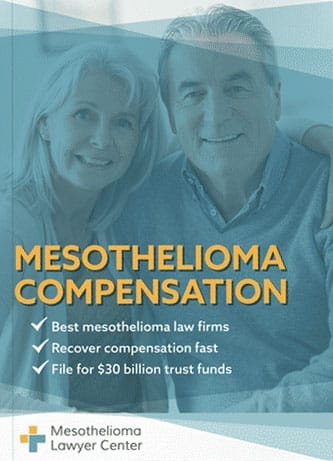Fort Lauderdale’s growth coincided with the widespread use of asbestos in construction and other industries. Many residents rely on experienced Fort Lauderdale mesothelioma lawyers after developing asbestos-related illnesses such as asbestosis and malignant mesothelioma.
If you have been diagnosed with mesothelioma, asbestos-related lung cancer, or asbestosis, you may qualify for substantial compensation. We invite you to fill out our form today for a free Financial Compensation Packet, filled with information about experienced mesothelioma lawyers in your area, how to get paid in 90 days, how to file an asbestos trust fund claim, and much more.


FREE Financial Compensation Packet
- Info on law firms that will recover your HIGHEST COMPENSATION
- Learn how to get paid in 90 days
- File for your share of $30 billion in trust funds
Fort Lauderdale Asbestos Facts

- Between 1999 and 2017, there were over 18,000 asbestos-related deaths in Florida.
- Broward County, home to Fort Lauderdale, has the third-highest number of asbestos deaths in the state.
- Fort Lauderdale grew rapidly in the 1900s, and the construction of hotels, homes, and other buildings coincided with the heavy use of asbestos in building materials.
- Other sites in Fort Lauderdale that put people at risk of asbestos exposure include military stations, airports, utility and power companies, and shipyards and ports.
When discussing the dangers associated with asbestos, certain types are recognized as posing greater risks than others. Specifically, crocidolite and amosite asbestos are known for their significant health hazards due to their properties and fiber structures.
Crocidolite, often referred to as blue asbestos, is exceptionally toxic and can cause serious lung diseases. Its thin fibers are easily inhalable, making it highly dangerous.
Amosite, commonly known as brown asbestos, also represents a high risk. It’s primarily found in construction materials and is associated with an increased likelihood of mesothelioma and other lung-related illnesses.
In comparison, chrysotile asbestos, or white asbestos, is generally considered less harmful. It’s the most prevalent form and its curly fibers are believed to be less likely to embed in the lungs.
Understanding the varying dangers of these types can aid in the awareness and prevention of asbestos-related health issues.
What is Asbestos and How is it Used in Construction?
Asbestos is a naturally occurring silicate mineral known for its durability and resistance to heat. Composed of microscopic fibers, this robust material has long been a staple in construction.
Key Characteristics of Asbestos
- Heat Resistance: Asbestos can withstand extreme temperatures, making it invaluable for fireproofing applications.
- Durability: The fibrous nature of asbestos gives it remarkable strength and longevity.
Applications in Construction
- Insulation: Asbestos is frequently utilized as a thermal insulator, providing an effective barrier against temperature fluctuations.
- Electrical Insulation: Given its non-conductive properties, asbestos has been incorporated into materials that insulate electrical components.
- Fireproofing: Its ability to resist fire made asbestos a popular choice for enhancing the safety of buildings.
Due to these properties, asbestos has historically been integrated into a variety of construction materials, although its use has diminished significantly due to health concerns related to asbestos exposure.
How Did I Get Mesothelioma?
Mesothelioma is a rare cancer that is almost always caused by asbestos exposure. Most people were exposed to asbestos on the job. If you have mesothelioma, you likely worked with or around asbestos products. Asbestos readily sheds small fibers, which can be inhaled. Once in the lungs, the asbestos fibers cause damage that can lead to cancer and other illnesses.
Who is at Risk?
Asbestos exposure is not limited to a single environment or profession. Various groups and settings are at risk:
- Occupational Exposure: Many individuals who develop mesothelioma have been exposed to asbestos in their workplaces. This includes:
- Shipyard workers
- United States Navy personnel
- Plumbers and electricians
- Pipe fitters and steel workers
- Construction workers
- Auto and airplane mechanics
- Contractors
- Maintenance and janitorial workers
- Environmental Exposure: Living in a “sick building” constructed with asbestos materials can increase risk.
- Secondary Exposure: Family members of workers exposed to asbestos may also be at risk, particularly when laundering contaminated clothing.
Additional Risk Factors
While asbestos is the primary cause, smoking can significantly increase the risk of developing mesothelioma after asbestos exposure. It’s crucial for those in high-risk categories to be aware of these factors and take preventive measures whenever possible.
Understanding these risks and exposures can help individuals take proactive steps to protect themselves and their loved ones from the dangers of asbestos-related diseases.
Pleural mesothelioma occurs when asbestos damages tissue around the lungs. It causes symptoms like shortness of breath, chest pains, and coughing. Mesothelioma can also occur in the abdomen. This is called peritoneal mesothelioma.
If you are diagnosed with an asbestos illness like mesothelioma, you were most likely the victim of negligent asbestos exposure. You have a right to take legal action and to seek compensation. Top-rated Florida mesothelioma lawyers in Fort Lauderdale can help you take the next step.
How Smoking Influences Mesothelioma Risk Post-Asbestos Exposure
Smoking and asbestos exposure together pose a heightened health threat, particularly when it comes to mesothelioma, a type of cancer linked to asbestos. Here’s how smoking can exacerbate this risk:
- Impaired Lung Function: Smoking damages your lung tissues. This damage can weaken the lungs, making them less capable of handling additional harm from asbestos fibers.
- Synergistic Effect: When smoking is combined with asbestos exposure, there’s a multiplicative effect rather than just an additive one. In other words, the risks associated with each can compound, significantly elevating the likelihood of developing mesothelioma.
- Reduced Clearance of Particles: Smokers may have a reduced ability to clear asbestos fibers from their lungs. Smoking can impair the cilia, tiny hair-like structures in the lungs, which play a crucial role in expelling foreign particles.
- Inflammation and Scarring: Both smoking and asbestos can lead to inflammation and scarring in the lung tissue. This environment promotes cellular changes that can lead to cancer over time.
Ultimately, if you have a history of asbestos exposure, avoiding smoking is a crucial step in reducing your overall cancer risk.
How Does Asbestos Exposure Lead to Various Cancers?
Asbestos exposure is primarily linked to lung-related diseases, but its impact extends to several types of cancer beyond the lungs. Understanding this risk can highlight the profound influence asbestos has on the body’s internal systems.
Types of Cancer Linked to Asbestos
- Esophageal Cancer: Inhaled asbestos fibers can travel through the body’s systems, sometimes lodging in the esophagus, leading to irritation and inflammation. Over time, this persistent irritation can contribute to the development of cancerous cells in the esophagus.
- Laryngeal Cancer: If asbestos fibers are inhaled, they may directly contact the larynx. This contact can result in chronic inflammation, a major risk factor for cancer in this area.
- Stomach Cancer: Once ingested, asbestos fibers can settle in the stomach lining. There, they can induce inflammation and mutagenic changes, eventually leading to the growth of malignancies.
- Colon Cancer: Similar to stomach cancer, asbestos fibers that make their way to the colon can cause inflammation and cellular changes. The fibers might irritate the colon’s lining, increasing the likelihood of cancerous developments.
- Rectal Cancer: Asbestos can also lodge in the rectal area, where long-term exposure can initiate changes at the cellular level, culminating in cancer.
The Pathway of Exposure
The dangers of asbestos largely stem from its ability to become airborne, entering the body through inhalation or ingestion. Once inside, these tiny yet harmful fibers can travel to various sites, embed themselves in tissues, and cause chronic inflammation—a precursor to cancer.
Prevention and Awareness
Being aware of the risks can lead to better preventive measures. Ensuring homes and workplaces are free of asbestos materials and educating individuals about potential exposure sources remains crucial in the fight against asbestos-induced cancers.
How Can Family Members Be Affected by Asbestos Exposure?
Family members of workers exposed to asbestos are at risk, even if they’ve never set foot in a contaminated workplace. Here’s how:
- Contaminated Clothing: When workers return home with clothes covered in asbestos fibers, their families can inhale these harmful particles during activities like laundry.
- Secondary Exposure: Fibers can settle in common areas, such as on furniture or in cars, leading to indirect contact. Routine household cleaning can disturb these fibers, putting family members at risk.
- Ambient Particles: Asbestos fibers are incredibly durable and can linger in the air for extended periods. This means that anyone in close proximity to an exposed worker might inhale these particles over time.
The health risks linked to asbestos include serious conditions like mesothelioma and lung cancer, which makes understanding and mitigating secondary exposure crucial for protecting loved ones.
What Will a Fort Lauderdale Mesothelioma Lawyer Do to Help Me?
Mesothelioma and asbestos attorneys represent victims of asbestos exposure in legal actions. Asbestos litigation is very complicated. If you have mesothelioma, you need an experienced guide to help you take action and recover damages.
One of the primary challenges in these cases is the long latency period of mesothelioma symptoms. It often takes years, sometimes decades, for symptoms to manifest after asbestos exposure. This prolonged period can make it difficult to establish a direct connection between the cancer and asbestos exposure.
To overcome this hurdle, the testimony of medical professionals becomes crucial. These experts can help draw the line between exposure and illness, providing the vital evidence needed to substantiate your claim.
Navigating these complexities requires a legal expert who understands the medical intricacies and can effectively argue your case.

Choose a lawyer with experience winning for asbestos clients. They should be part of a larger firm with the resources necessary to win complex cases like those involving asbestos exposure. The right lawyer will help you in several ways:
- Provide a free initial consultation to review your case
- Provide guidance on your next steps while explaining your options
- Use expert investigators to find the evidence to prove companies exposed you to asbestos
- Provide medical and other expert witnesses to prove your case
- Negotiate a settlement that gets you as much compensation as possible
- Litigate your case in court if it goes to trial
- Find and file claims for any asbestos trust funds you qualify for
Where Was I Exposed to Asbestos in Fort Lauderdale?
Asbestos was used in many industries and workplaces, from ports to military sites and more. These are just a few locations where you might have encountered asbestos in Fort Lauderdale.
Naval Air Station Fort Lauderdale
South Florida’s location on the Atlantic coast and year-round warm weather are ideal for the military. World War II resulted in many new military installations, including in Fort Lauderdale. Naval Air Station (NAS) Fort Lauderdale provided aviation training for Navy pilots and crew members.
Other military stations in the area include:
- Naval Air Station Boat Facility
- Fort Lauderdale Navy Section Base
- Fort Lauderdale Coast Guard Station

Like most military sites of the era, NAS Fort Lauderdale and its supporting facilities were either built with construction materials that contained asbestos or housed aircraft, vehicles, and vessels made with asbestos-containing materials.
Consequently, thousands of men and women assigned to Fort Lauderdale were exposed to asbestos during the war. Many of these veterans developed asbestos-related mesothelioma and other illnesses.
Fort Lauderdale-Hollywood International Airport
After the war, the U.S. Navy decommissioned NAS Fort Lauderdale, which had been built on the city’s Merle Fogg Airport site. It resumed commercial aviation operations and in 1959 was named Fort Lauderdale-Hollywood International Airport.
Asbestos was used in large quantities during the construction and modernization of the terminal, and it was also present in airplanes, ground vehicles, maintenance areas, and other parts of Fort Lauderdale-Hollywood. Many workers were exposed to the harmful fibers from these materials.
Port Everglades
Port Everglades is one of the busiest ports in the U.S. It is the world’s third-largest cruise ship port; in the 2013-2014 winter cruise season, over 40 passenger ships sailed to Port Everglades. Additionally, Port Everglades receives over 4,000 container ship calls a year.

Port Everglades was constructed in 1928. Its original structures, including warehouses, passenger terminals, fuel bunkers, pipelines, and oil storage tanks, contained large amounts of asbestos. Asbestos exposure in Port Everglades became a long-lasting workplace safety issue for port workers and seamen alike.
The port also handled vessels containing considerable amounts of asbestos, placing more lives at risk and contributing to the current increase in mesothelioma and asbestosis cases.
Other Fort Lauderdale Job Sites Linked to Asbestos Exposure
Fort Lauderdale’s growth and development coincided with the peak period of asbestos use by construction companies and other industries, including such utility companies as Florida Power & Light.
Many of the city’s public buildings, hospitals, apartment buildings, hotels, and single-family houses were built with materials laden with asbestos fibers.
Some of the job sites and public facilities with past or current asbestos include:
Hospitals
- Broward General Hospital
- Good Samaritan Hospital
- Holy Cross Hospital
- North Shore Hospital
Schools
- Fort Lauderdale High School
- Dillard High School
- Stranahan High School
- South Broward High School
- Plantation Middle School
- Deerfield Beach Elementary School
Department Stores
- Burdines (now Macy’s)
Insulation and Construction Materials
- North Brothers, Incorporated
- Florida insulation & Fireproof
- Lakeview Siding
Public Utilities
- Southern Bell (BellSouth/AT&T)
- Florida Power & Light (FPL)
Professions Frequently Exposed to Asbestos
Asbestos exposure remains a concern in various occupations, particularly those involving manual labor and technical skills. Some of the most affected professions include:
- Shipyard Workers: Often dealing with materials that contain asbestos due to its heat-resistant properties.
- Military Personnel: Especially those in the U.S. Navy, where asbestos was widely used for insulation and fireproofing.
- Plumbers and Pipefitters: Frequently encounter asbestos in old pipe systems and boilers.
- Electricians: May face exposure through insulated wiring and electrical panels.
- Steel and Construction Workers: Engage with construction materials that historically contained asbestos for durability and fire resistance.
- Automotive and Aircraft Technicians: Handle brakes, clutches, and other parts containing asbestos fibers.
- Construction and Building Contractors: Often involved in renovations or demolitions where asbestos is disturbed.
- Maintenance and Janitorial Staff: Frequently responsible for cleaning mechanical spaces and facilities where asbestos-containing materials might be present.
These professionals often encounter asbestos during routine tasks, highlighting the importance of awareness and safety precautions in these fields.
These lawyers made us feel so much better about going through this terrible process. We had no idea where to begin and they helped get us all the compensation we possibly could. They were friendly understanding and very hard-working. They answered any questions we had about compensation and even medical advice
-Natalie F.
Mesothelioma Treatment in Florida
The Moffitt Cancer Center in Tampa is a cancer treatment facility designated by the National Cancer Institute (NCI) as a Comprehensive Care Cancer Center.
As one of the 41 NCI-designated centers in the U.S., Moffitt’s primary mission is to develop new research techniques and treatments for cancers of the lungs, including mesothelioma.
Contact Information for Moffitt Cancer Center:
12902 USF Magnolia Drive
University of South Florida, USF Health
Tampa, Florida, 33612
888-663-3488
Getting Legal Help in Fort Lauderdale
As previously mentioned, if you’ve been diagnosed with mesothelioma, asbestos-related lung cancer, or asbestosis, you may be entitled to compensatory damages. Remember to fill out our form to get your free Financial Compensation Packet, with information on experienced asbestos and mesothelioma lawyers in your area. If you have questions or need assistance, contact us toll-free at 800-793-4540.

Rebecca S. Vinocur, P.A.
Reviewer and EditorRebecca S. Vinocur heads up her own mesothelioma law firm based in Coral Gables, Florida. A graduate of the University of Miami School of Law, Rebecca has over twenty years of mesothelioma law practice in the state of Florida. She uses her experience and knowledge of asbestos litigation to fight on behalf of asbestos victims who are battling mesothelioma and other related illnesses.
Connect with Florida Mesothelioma Lawyer Rebecca S. Vinocur, P.A.
References
- National Cancer Institute. (2020, January 7). Moffitt Cancer Center.
Retrieved from: http://www.cancer.gov/researchandfunding/extramural/cancercenters/find-a-cancer-center/moffitt - U.S. Geological Survey. (2006). Reported Historic Asbestos Mines, Historic Asbestos Prospects, and Natural Asbestos Occurrences in the Eastern United States.
Retrieved from: http://pubs.usgs.gov/of/2005/1189/pdf/Plate.pdf - Naval Air Station Fort Lauderdale Museum. (n.d.). History of Naval Air Station Fort Lauderdale.
Retrieved from: http://www.nasflmuseum.com/nasfl-history.html - Environmental Working Group. (n.d.). Asbestos-Related Deaths in Florida.
Retrieved from: http://www.asbestosnation.org/facts/asbestos-deaths/fl/
